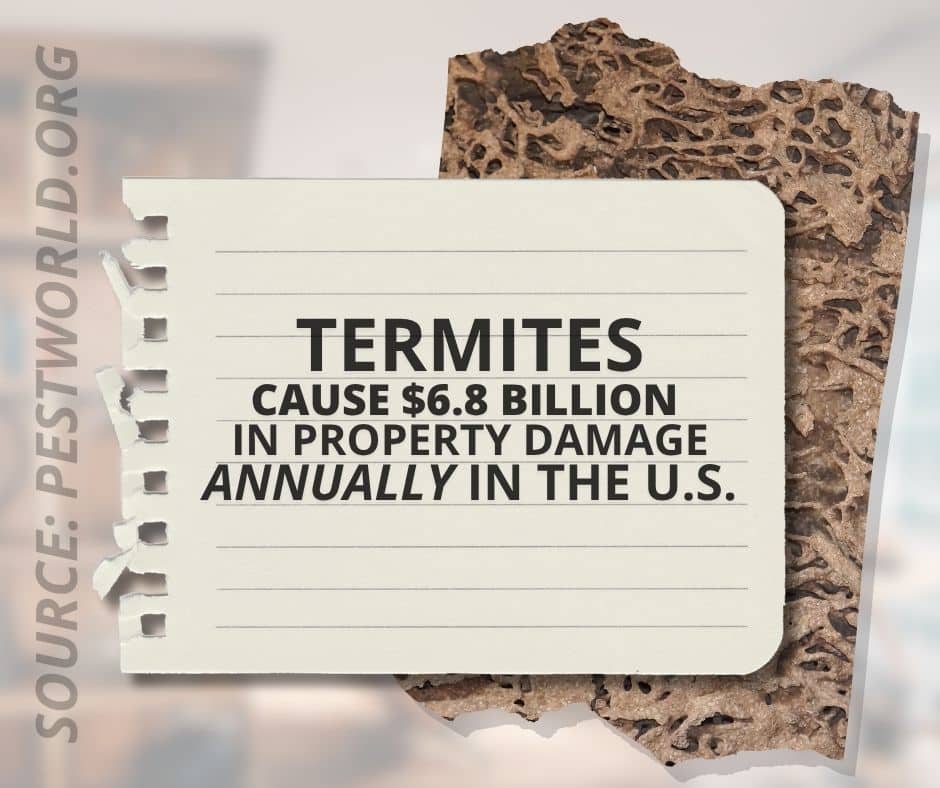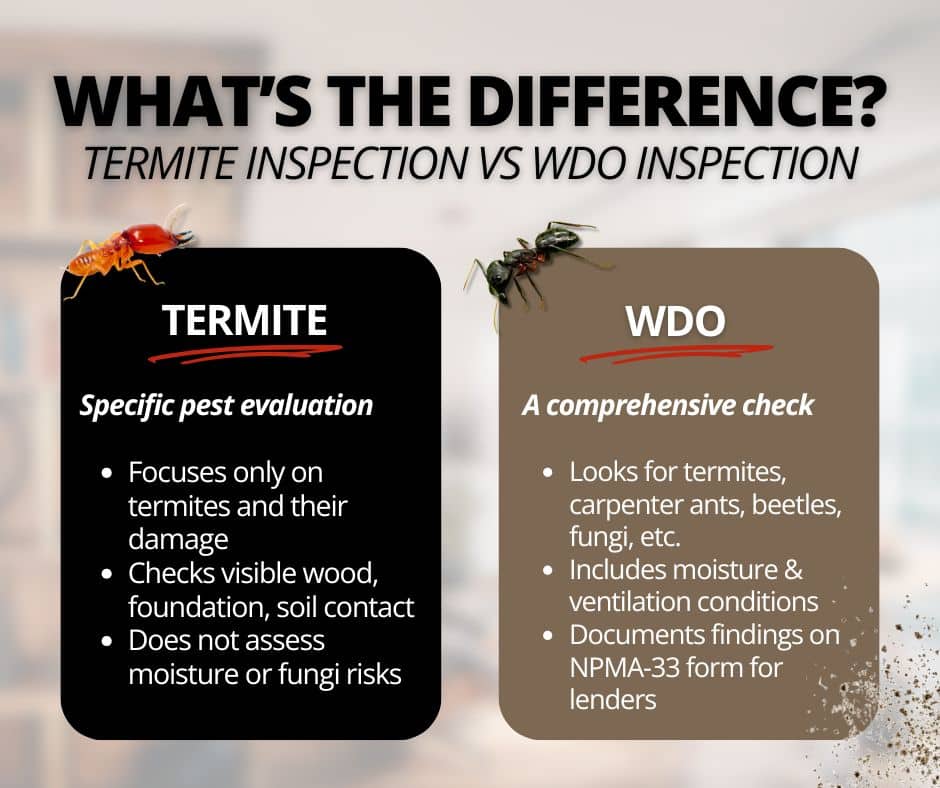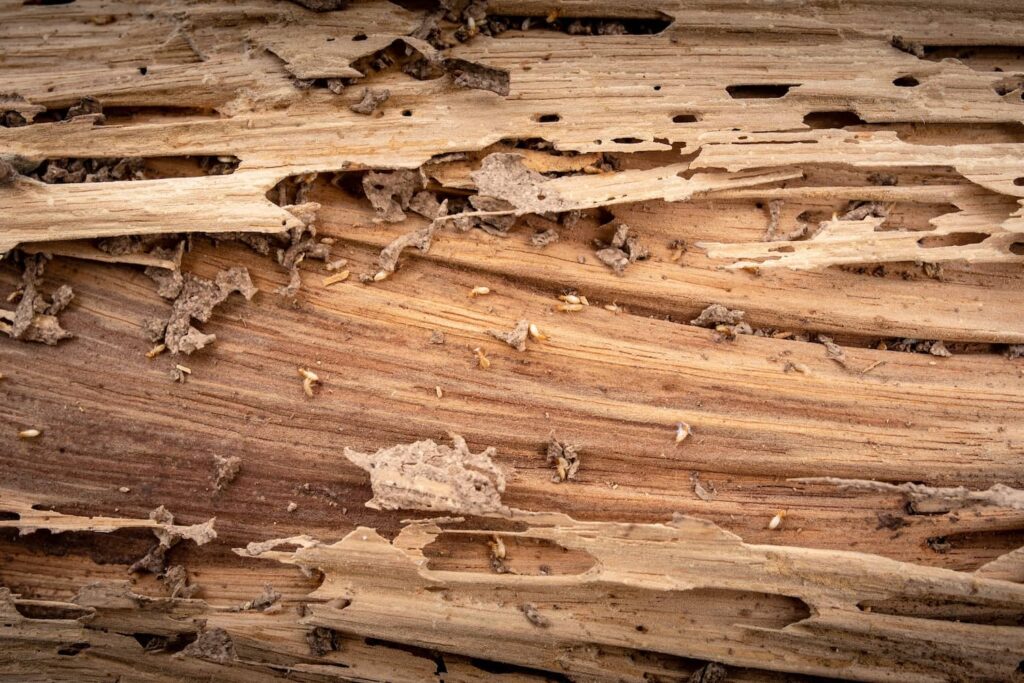Wood damage inside a home often happens slowly, hidden behind walls or beneath floors. By the time you see signs of termites or rot, the repair cost can already be high. That is why a WDO inspection is so valuable.
WDO stands for Wood-Destroying Organism. A WDO inspection looks for insects and fungi that feed on or weaken wood. It is one of the most important steps in protecting your home, especially when buying or selling property.
For homeowners across Georgia and Michigan, where humid conditions encourage termite and beetle activity, this inspection can be the difference between a simple fix and a major structural repair.
What a WDO Inspection Includes
A WDO inspection checks for any organism or condition that causes wood decay. That includes insects, fungi, and even moisture problems that make wood vulnerable.
During a Champia Real Estate Inspections visit, inspectors look for:
- Termites: Subterranean and drywood species that hollow out framing and trim.
- Carpenter Ants: Insects that tunnel through damp wood to build nests.
- Wood-Boring Beetles: Tiny beetles whose larvae feed on timber and leave powdery residue called frass.
- Wood Decay Fungi: Mold, mildew, or brown-rot fungi that soften and discolor structural wood.
Inspectors also examine moisture sources, entry points, and environmental conditions that attract wood-destroying organisms. Even if no live insects are found, the inspection report highlights any conditions that could lead to future infestations, such as leaks, plumbing drips, or poor ventilation.
Why WDO Inspections Matter
A WDO inspection does far more than identify pests. It helps protect your home’s structure, value, and air quality.

1. Protects Structural Strength
Wood-destroying organisms compromise the integrity of framing, floors, and support beams. According to the National Pest Management Association (NPMA), termites alone cause over five billion dollars in property damage annually in the United States.
Early detection allows for simple treatments instead of major structural reconstruction.
2. Supports Real Estate Transactions
In most real estate transactions, lenders require a WDO inspection before closing. The results are documented on Form NPMA-33, a standardized report that certifies the home is free of active infestations or structural damage from wood-destroying organisms.
A clear report helps avoid closing delays and builds trust between buyer and seller.
3. Reveals Hidden Moisture Problems
Many infestations start because of unseen water damage. A WDO inspection often uncovers roof leaks, condensation issues, or poor yard drainage. Fixing these problems prevents pest activity and protects against mold and fungus.
4. Improves Indoor Air Quality
Wood decay fungi release spores and gases that can circulate throughout your HVAC system. Over time, this can contribute to musty odors and allergic symptoms. A WDO inspection identifies and removes the source of these issues, helping maintain healthier indoor air.
5. Preserves Home Value
Regular inspections keep your home in excellent condition. Buyers are more confident in a property that has documented pest-free results and well-maintained structures. That transparency often leads to faster sales and stronger offers.
When to Schedule a WDO Inspection
Timing can make all the difference in preventing long-term damage. The best times to schedule an inspection include:
| Situation | Why It’s Important |
| Before buying a home | Confirms structural soundness and reveals any pest damage before closing. |
| Before selling a home | Prevents last-minute surprises and strengthens the seller’s disclosure. |
| After water damage or flooding | Moisture creates ideal conditions for termites and fungi. Inspections ensure full drying and repair. |
| Every two to three years | Regular inspections detect early infestations and prevent major repairs. |
| Before remodeling | Identifies hidden pest or rot damage before new walls or flooring are added. |
For homes in Georgia and Michigan, annual or biannual inspections are often recommended. Both regions experience termite activity nearly year-round because of warm weather, humid summers, and fluctuating soil moisture.
What to Expect During a WDO Inspection
A professional WDO inspection from Champia Real Estate Inspections is detailed but non-invasive. It typically lasts between one and two hours, depending on property size and layout.
Step 1: Exterior Inspection
Inspectors begin outside the home, checking the foundation, decks, fences, and siding for visible damage or mud tubes. They also look for soft or discolored wood, bubbling paint, or signs of excess moisture.
Step 2: Interior Inspection
Next, the inspector checks baseboards, attics, crawl spaces, and window frames for hollow or weakened areas. Using a probe or screwdriver, they test wood density and note any signs of insect tunnels or frass.
Step 3: Moisture and Ventilation Assessment
Moisture meters and infrared cameras help detect damp areas hidden behind walls or insulation. Proper ventilation is essential because trapped humidity often leads to wood decay fungi.
Step 4: Documentation and Photos
Each inspection ends with a detailed WDO report that includes photos, findings, and professional recommendations for treatment or prevention. This document is essential for buyers, sellers, and lenders during transactions.
Step 5: Review and Next Steps
If the inspector finds active infestations, they outline treatment options and repair priorities. Champia’s licensed team often partners with local pest management professionals to provide seamless follow-up service.
Signs You May Need a WDO Inspection Right Now
If you notice any of these warning signs, do not wait until your next real estate transaction to schedule an inspection:
- Mud tubes or tunnels along the foundation or crawl-space walls
- Tiny holes in wood or drywall with fine sawdust nearby
- Peeling paint that looks like water damage but is caused by insects beneath the surface
- Swarming insects near windows or light fixtures during spring
- Soft or hollow-sounding flooring when walked on
- Musty odors in basements, attics, or around window frames
Even small clues like these can point to deeper structural damage hidden behind walls or subfloors.
How to Prevent Future WDO Damage
The best way to protect your home is to make it less appealing to wood-destroying organisms.
| Prevention Step | Why It Works |
| Keep gutters and downspouts clear | Directs rainwater away from the foundation and wood siding. |
| Seal cracks and utility openings | Prevents insects from entering through small gaps. |
| Maintain proper ventilation | Lowers humidity levels that promote mold and rot. |
| Store firewood away from the house | Reduces pest nesting near your foundation. |
| Trim shrubs and trees regularly | Keeps branches from contacting wood surfaces. |
| Schedule annual WDO inspections | Provides early detection and long-term protection. |
Extra Tip: Consider adding a moisture barrier or crawl-space encapsulation system, especially in humid areas. Keeping these spaces sealed and dry drastically reduces the risk of termite and fungus activity that starts below your living areas.

Is a WDO Inspection the Same as a Termite Inspection?
Not quite. A termite inspection focuses only on termites. A WDO inspection covers all organisms and conditions that damage wood, including carpenter ants, beetles, and wood rot fungi.
While both inspections aim to preserve your home’s structure, the WDO inspection provides a broader view of risk factors and underlying causes. Many homeowners choose WDO inspections because they deliver more complete insight into long-term structural health.
Other Related Questions
Do I need a WDO inspection if my home is made of brick?
Yes. Even brick and concrete homes contain wooden framing, roof supports, and window trim. Termites and fungi can access those materials through cracks or gaps in mortar.
Can I repair small wood damage myself?
You can patch minor surface areas, but DIY fixes rarely solve the root problem. Professional inspection ensures the infestation or decay has been fully removed before repairs begin.
What happens if the inspection finds active termites?
Your inspector will recommend treatment options and follow-up verification after completion. Once the issue is resolved, a clearance inspection can confirm that activity has stopped.
How long is a WDO report valid?
Reports are generally valid for thirty to ninety days, depending on lender and state requirements. For longer closings, a re-inspection may be required to maintain certification.
Does homeowner’s insurance cover termite or fungus damage?
Most policies do not. Because these issues are considered preventable through regular maintenance, homeowners are responsible for scheduling inspections and preventive treatments.
When to Call a Professional
If it has been several years since your last inspection or you are noticing signs of damage, schedule a professional WDO inspection soon.
Champia Real Estate Inspections serves both Georgia and Michigan, providing thorough WDO and termite inspections using moisture meters, infrared imaging, and advanced diagnostic tools.
Their experienced inspectors identify active infestations, document findings for buyers and sellers, and offer recommendations suited to your property’s structure and environment. Whether you are buying, selling, or maintaining your home, Champia ensures your foundation, framing, and wood features remain secure.
Scheduling inspections annually, particularly before the spring swarming season, helps prevent infestations and protects your investment from costly repairs.
Conclusion
Wood-destroying organisms are silent threats that can quietly weaken your home over time. A professional WDO inspection helps you stay ahead by catching small issues before they become expensive problems.
If you are preparing to buy or sell a home or simply want to keep your current one strong and healthy, schedule an inspection with Champia. Their trusted team provides accurate reporting and expert insight to help homeowners in Georgia and Michigan protect their properties year after year.
